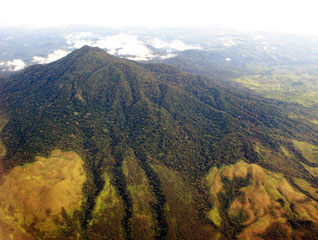Report on Seulawah Agam (Indonesia) — 2 January-8 January 2013
Smithsonian Institution / US Geological Survey
Weekly Volcanic Activity Report, 2 January-8 January 2013
Managing Editor: Sally Sennert.
Please cite this report as:
Global Volcanism Program, 2013. Report on Seulawah Agam (Indonesia) (Sennert, S, ed.). Weekly Volcanic Activity Report, 2 January-8 January 2013. Smithsonian Institution and US Geological Survey.
Seulawah Agam
Indonesia
5.448°N, 95.658°E; summit elev. 1810 m
All times are local (unless otherwise noted)
CVGHM reported that seismicity at Seulawah Agam increased during 27 December-2 January. Visual observations were prevented due to fog, although on 2 January scientists observed a new solfatara that produced roaring noises and was within 20 m of van Heutsz Crater on the NNE flank. The Alert Level was raised to 2 (on a scale of 1-4) on 3 January.
Geological Summary. Seulawah Agam at the NW tip of Sumatra is an extensively forested volcano of Pleistocene-Holocene age constructed within the large Pleistocene Lam Teuba caldera. A smaller 8 x 6 km caldera lies within Lam Teuba caldera. The summit contains a forested, 400-m-wide crater. The active van Heutsz crater, located at 650 m on the NNE flank of Suelawah Agam, is one of several areas containing active fumarole fields. Sapper (1927) and the Catalog of Active Volcanoes of the World (CAVW) reported an explosive eruption in the early 16th century, and the CAVW also listed an eruption from the van Heutsz crater in 1839. Rock et al. (1982) found no evidence for historical eruptions. However the Volcanological Survey of Indonesia noted that although no historical eruptions have occurred from the main cone, the reported NNE-flank explosive activity may have been hydrothermal and not have involved new magmatic activity.
Source: Pusat Vulkanologi dan Mitigasi Bencana Geologi (PVMBG, also known as CVGHM)

